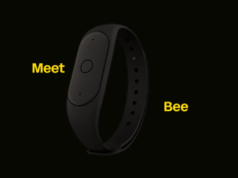High-performance computing and gaming enthusiasts heard some good news and bad news yesterday from AMD. The good news: the company said its long-awaited Zen CPU architecture, which is built from the ground up, delivered a “landmark increase” in processor performance in tests. The bad news: the first Zen chips, initially expected later this year, have been delayed until early next year.
AMD unveiled some new details about the coming arrival of Zen during a special event in San Francisco. The event took place not far from where Intel is currently holding its annual developer forum. The Zen CPU could potentially pose a new threat to rival Intel’s chips.
Speaking during the AMD event, president and CEO Lisa Su said Zen will lay the foundation for a new family of products the company plans to roll out. The company is set to reveal more details about the in-development CPU core at next week’s Hot Chips symposium in Cupertino, Calif.
Core Features ‘Clean-Sheet’ Design
In yesterday’s presentation AMD claimed that a Zen-based, 8-core, 16-thread desktop processor — code-name Summit Ridge — “just edged out” a comparable Intel Broadwell-E processor when both were set to the same clock speed. AMD senior vice president and CTO Mark Papermaster said the Zen architecture has been shown to deliver a 40-percent clock improvement over AMD’s previous generation of CPU.
Zen’s “clean-sheet” design features a number of changes over AMD’s previous CPUs, including a new cache hierarchy and simultaneous multithreading (SMT). Ars Technica noted today that the new architecture “corrects most of the mistakes made with AMD’s line of Bulldozer-based CPU cores,” adding that SMT has already “been used to great effect by Intel.”
Zen will first make its appearance in core-based computing products for high-performance desktops, according to AMD. The company said the CPU architecture will show up later in enterprise ![]() -class servers, mobile PCs and embedded applications.
-class servers, mobile PCs and embedded applications.
During yesterday’s event, AMD also demonstrated “Naples” — a 32-core, 64-thread processor based on Zen — in a dual-processor server with the Windows Server operating system.
Architecture Promises ‘Improved Responsiveness’
The first desktops to feature Zen will use AMD’s AM4 socket, a new infrastructure that’s compatible with AMD’s 7th-generation A-Series desktop processors.
“With dedicated PCIe lanes for cutting-edge USB, graphics, data and other I/O, the AMD AM4 platform will not steal lanes from other devices and components,” the company said today in a statement. “This allows users to enjoy systems with improved responsiveness and benefit from future-ready technologies that the AM4 platform provides with a powerful, scalable and reliable computing solution.”
The new microarchitecture in Zen cores was designed for “maximum compute performance,” the company said. Featuring a new low-latency, three-tier cache and new pre-fetch algorithms, Zen also leads to “dramatically fewer cache misses and greater bandwidth compared to the previous architecture,” AMD said






